You can’t really utter Michelle Adams’ name in our office without a whole lot of wide eyes and fangirling to follow. As a household name in the interiors industry, we were beyond ecstatic to have the chance to ask her all the things about her career path and gorgeous Ann Arbor home.
because his sock drawer is full and those #1 Dad mugs are collecting dust
It’s hard to imagine that the former editor-in-chief of Domino and co-founder of Lonny (one of the most successful online shelter magazines to date) ever had to beg for a job, but that’s exactly how her career started. In order to get her foot in the door at Condé Nast directly out of college, Michelle spent her senior year cold-calling the receptionist and contacting any and every Domino email that she could get her hands on. After finally landing an “informational interview” thanks to a contact she made on the ad sales team, Michelle got a call a few weeks later inviting her on as an assistant in the editorial department. The rest is, quite literally, history.
Now, Michelle serves as a creative consultant for clients like Artfully Walls and Arhaus, and blogs over at The Maryn, where she’s currently working on launching an online shop. Today, we chat with her about the lessons she learned the hard way while building Lonny from the ground up, her transition from renting in the Big Apple to owning in her home state of Michigan, and why it’s important to stay true to your style—and more importantly, yourself.
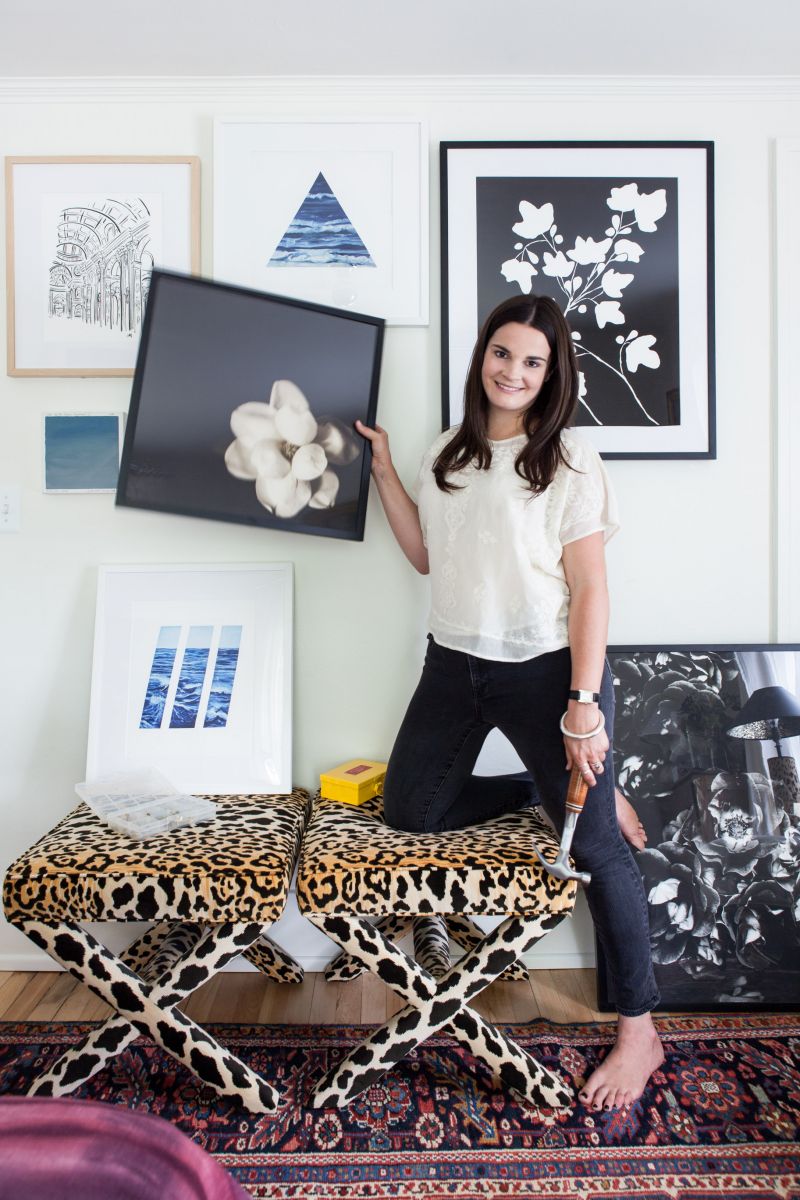
Name: Michelle Adams
Age: 33
Current Position/Company: Lead Consultant at Adams Creative Consulting and soon-to-be shop owner at The Maryn
Educational Background: Two degrees in Textile Design and Advertising; Michigan State University
Let’s start from the beginning. You attended Michigan State University and graduated in 2006. From there, you started out as the market assistant at Domino for Condé Nast. How did you get your foot in the door for that position?
Oh man, I BEGGED! I spent my senior year of college cold-calling the receptionist, emailing the web team (and just about any other Domino email I could get my paws on), researching the staff, applying for Condé Nast internships, and so on. Finally, when I got in touch with the ad sales team, they offered me an “informational interview,” which was a polite way of saying that they didn’t have any jobs available but that they’d be nice enough to give me a tour of the offices. As soon as I heard I had a chance to meet the team, I began researching like a maniac and polishing up my portfolio since I knew I only had one shot. Sure enough, they ended up having an assistant position open up a few weeks later in the editorial department. I went through a lengthy interview process and ultimately landed my dream job the day I graduated. I moved to New York City one week later and started my new life and career!
What did that job teach you about what you ultimately wanted for yourself career-wise? Was there anything that surprised you about the work, expectations, or environment at Condé Nast?
I think the job showed me just how badly I wanted to work! I had been in college for six years at that point (getting two degrees), so by the time I graduated I was more than ready to take on real work, rather than school projects. I often stayed in the Domino offices until 2 a.m., and typically worked six days per week, sometimes seven. I was so proud to have my first “real” job, and I knew just how lucky I was to have landed it. It was clear to me that there were many talented people who would have killed for my role, so I didn’t take a second of it for granted.
With regards to design, the editorial assistant role honestly taught me more than I learned in college! The office was packed with brilliant people (Deborah did an incredible job building that dream team) and I spent my days learning from my co-workers, researching the market, attending press previews to see the latest and greatest in design, ordering products for shoots, getting coffee for the team and flowers for the set, and—my favorite part—assisting on photo shoots in the most spectacular homes I had ever seen! The experience was mind-blowing and absolutely built the foundation for the career I have today. I’m incredibly grateful for my bosses, Tori Mellott and Kate Townsend, for taking a chance on me and giving me that opportunity. It was life-changing!



In 2008, you founded your own soft goods and upholstery company, Rubie Green. What prompted that exciting launch and how did that fit in with the scope of your editorial career at the time?
In college I studied textile design as I was inspired by two of my personal design heroes, Rachel Ashwell and Cath Kidston. Both women are textile designers who have managed to build empires around their brands including books, shows, stores, and a variety of branded collections. So, I added on a textile design degree partway through college because of these women. I was also taking classes on sustainable design as part of my curriculum, and the general message that our professor wanted her design students to leave her class with was: “If you go out into the world and produce more ‘stuff,’ be sure you do so responsibly.” We studied various manufacturing processes and how to make them green, and her message ultimately stuck with me.
Fast forward to my Domino job, and I had been assigned to researching the market for eco-friendly fabrics for our annual “green issue.” To my surprise, at the time there were only a few textile companies making environmentally friendly fabrics, even though our readers and editors were demanding it. I saw a very obvious gap in the market that aligned with my interests and passion, so I went for it and started my first company, Rubie Green. I had a ball creating the branding behind the company, and hired a photo assistant who I had met on a Domino shoot to take photos of my products. We ended up working really well together, and eventually co-founded Lonny in 2009.


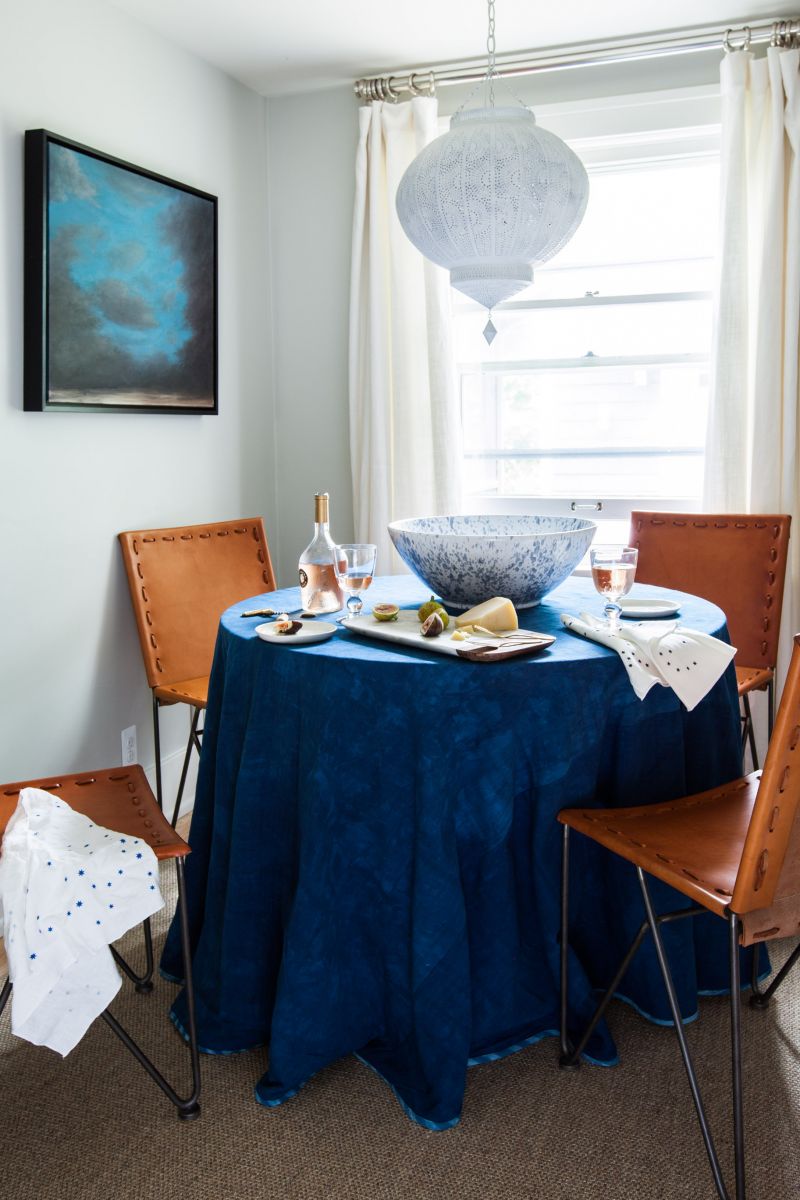
I grew up a lot during my years at Lonny and learned many lessons the hard way.
In 2009, you teamed up with Patrick Cline to co-found the highly acclaimed Lonny magazine, during the height of online shelter magazines. Tell us about that time as editor-in-chief and co-founder. How did the idea come about, and what made you passionate about it?
It was a whirlwind for sure! I started Lonny as a side project for my blog, thinking I could create a cool “issue” for my readers to enjoy. I hadn’t planned on making it more than that until Mediabistro incorrectly reported that “former Domino editors and Domino photographers are launching a new shelter title this fall.” Overnight there was a buzz and an expectation for something huge, so my tiny team scrambled to build a magazine that would please our readers!
We didn’t have any funding at the time, so we exchanged ads in our magazine to barter everything from film and film processing (yes, we shot Lonny on film!) and even the venue for our launch party and the food we served at it. I borrowed my parents’ car to get to the photo shoots, and spent the summer documenting the homes and lives of people who fascinated me that I had met during my Domino days. When we launched in October 2009, we had no idea it would turn into a company!
Seven months later we raised capital, built our staff, and we were off and running. It felt great to be creating original content at a time when so many of the design magazines I loved had just folded. It was one big learning experience that came with a lot of criticism and also a lot of praise. Although there was a tremendous amount of pressure, it was an experience that shaped my career and also shaped me as a person. I grew up a lot during those years and learned many lessons the hard way!
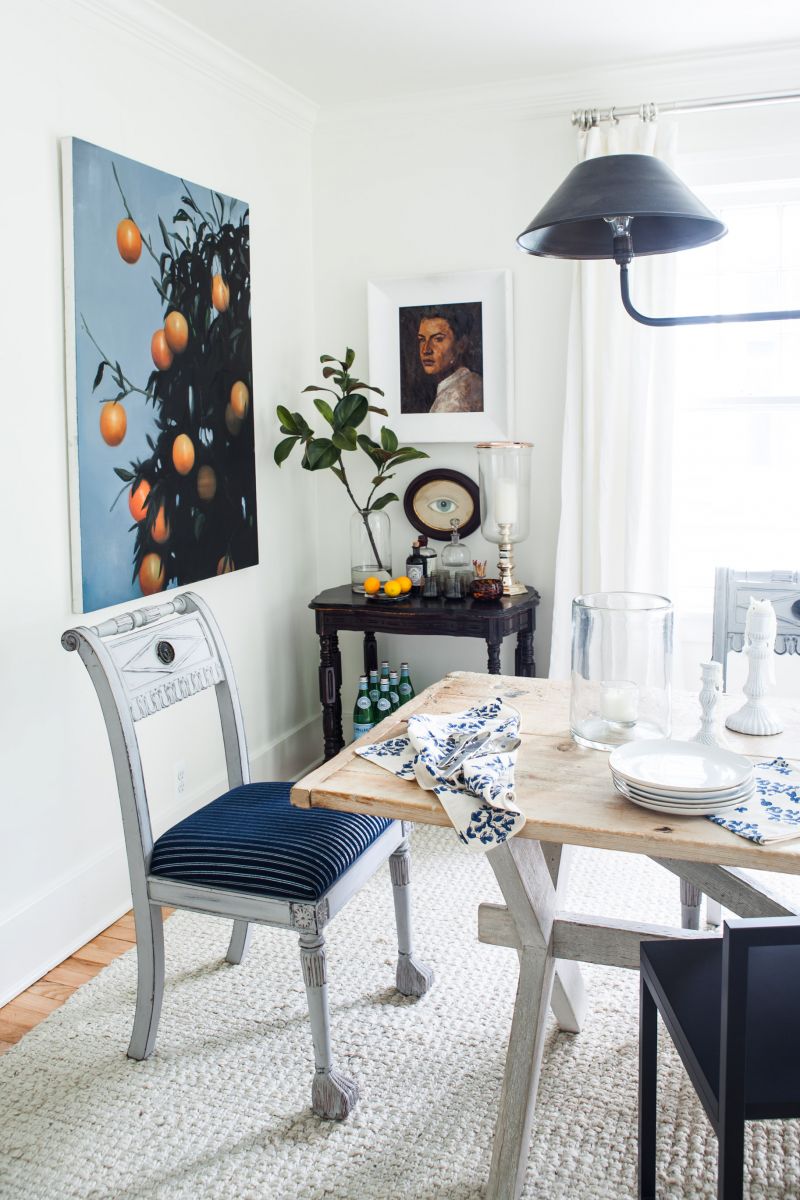

Many of the online shelter mags that we were around in 2009 are no longer being published. Why do you think Lonny was and still is successful?
I feel very proud of the fact that Lonny is still a successful magazine! I credit that fact entirely to our acquisition by Livingly Media in 2012. Their team has an outstanding technology department that honestly took Lonny to the next level back in 2012, and has continued to build it since. My team produced a ton of great content during our time at Lonny, but that content needed to live on the right tech platform to stand a chance at long term survival.
In 2011, you worked with the Meredith Corporation to launch TRADhome. How did the experience of working on TRADhome differ from launching Lonny?
I had the incredible honor of working with Ann Maine and her editorial team at Traditional Home to create TRADhome, which was a bit of a blend of our magazines. Traditional Home was interested in reaching a younger online audience similar to Lonny, and we at Lonny saw it as a great opportunity to collaborate with an industry-leading publication. Our brands merged to create a new brand identity, logo, voice, look, and feel. It nearly killed our tiny Lonny team to produce two magazines at the same time, but the experience was one of the highlights of our careers and helped bring even more validity to what our team was producing at Lonny, and the online shelter mag space in general.
From 2013-14, you became the editor-in-chief of Domino, a cult favorite among many of us in the online/blog design community. What was that year like, and how did it shape your career path to where you are now, as a creative consultant?
Oh gosh, it was nuts! Good and exciting, but still nuts. Our team was absolutely blown away to be chosen to bring back such a beloved industry title, yet we were presented with the challenge of creating it with a fraction of the original budget.
We were operating like a startup since Condé Nast had sold the title to a group of entrepreneurs, but given my background in creating Lonny on a shoestring, I was ready to take on the challenge! We had a lean staff but were lucky enough to recruit some of the hardest-working and most talented people I know. We spent the summer of 2013 literally flying around the world to build up enough content for launch—from L.A. to Morocco to India and back! At the same time we were tasked with building the online marketplace of drop-ship brands, which meant that we’d talk to vendors while in line at the airport or from our hotel rooms before heading to our shoots. The role required me to use every skill I had learned and every contact I had made in my career to pull it off. I couldn’t be more proud of the work we produced, or of my team.
After a year, I felt confident that the magazine was re-launched and in capable hands (more than capable in fact) for me to make the move back home to Michigan for personal reasons. At that point I had spent eight years in New York and had sacrificed any form of a personal life during that time. I was ready to spend time with my family, with my aging grandparents, and figure out what truly made me happy. It has been an awesome journey and I’ve done more reflecting and soul searching in the last two years than I have in my entire life. Being true to myself was the best decision I’ve ever made!
In order for an aspiring editor to have the kind of success you’ve had in your own career, what qualities would you say they need to embody in order to be an editor-in-chief? What skills have you found must be innate, as opposed to what can be taught or cultivated?
I’d say the most important quality is dedication. The role of editor-in-chief is one that requires all of you. Advertisers expect you to be at industry events nearly every night of the week, your team expects you to be present at the office when they’re working late nights, you’re expected to travel for photo shoots and events that the magazine is hosting, and last but not least, you’re expected to know what is going on in the marketplace and who is leading and innovating in your industry. It’s a lot of work! But it’s a very rewarding job for anybody who is up for the challenge and who is passionate about their industry.
Don’t be afraid if your point of view is different than others. Just run with it and continue to cultivate it by seeing as much and reading as much as possible.
Another quality is confidence. You need to be confident in your point of view enough to make tough editorial calls about what to feature and how to feature it. A lot of this confidence comes from years of working in your industry and having a real passion. Think about Diana Vreeland! She was all confidence and passion. And of course in addition to this dedication and confidence, you need to have a clear point of view. Don’t be afraid if it’s different than others. Just run with it and continue to cultivate it by seeing as much and reading as much as possible. Challenge yourself.
Personally, I never thought I’d become an editor-in-chief (as I mentioned previously how the formation of Lonny magazine was a bit of a surprise to me!) so I had an incredible amount to learn in a very short window of time. I’m still learning in fact! I admire editors like Pilar Guzmán and have enjoyed watching her career path. She’s whip-smart and has a very clear point of view. I immediately become a fan of every publication she edits.

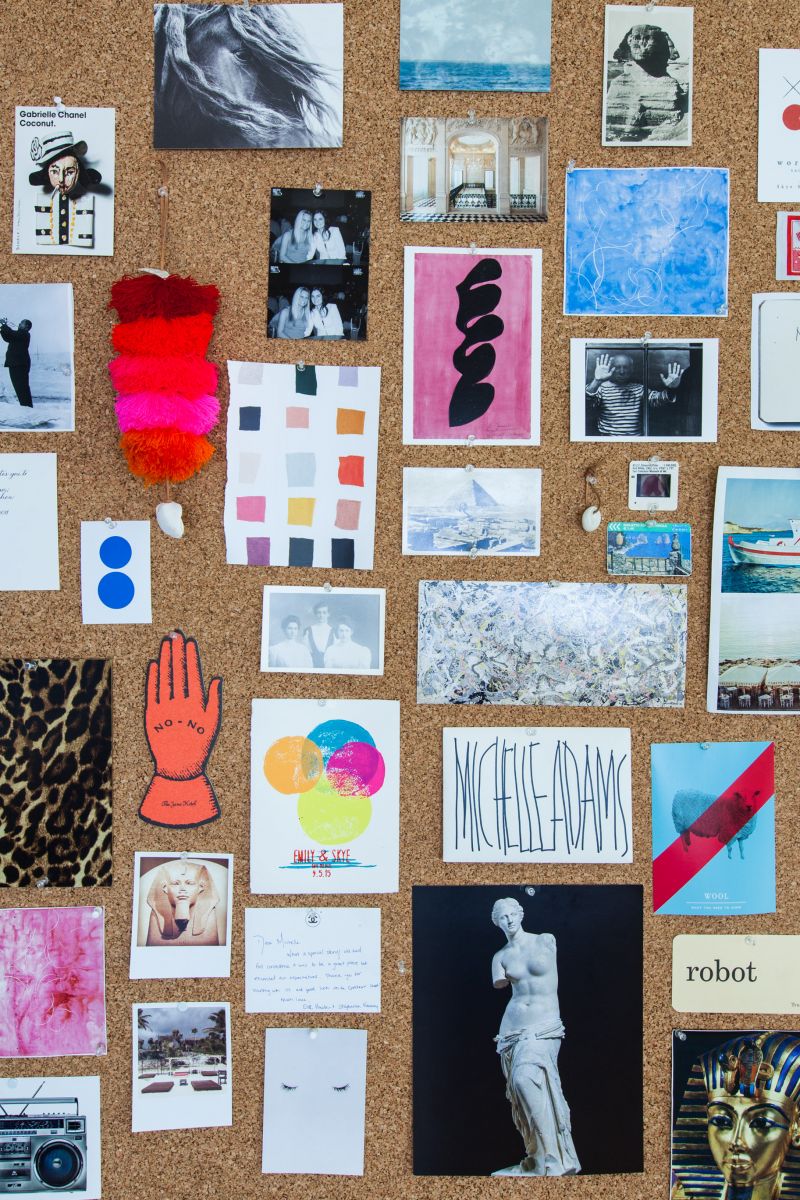
You’ve had some incredible and major career transitions, from your textile company to Lonny and Domino. How did you know when it was time to move on to another position or path?
Honestly, I’m not really sure that I did know when it was the right time to move on! Things really fell naturally into place. Rubie Green wasn’t making enough money for me to focus on it, whereas Lonny was taking off, so I shifted gears. Then, when I sold Lonny I helped the new team transition for eight months before accepting the offer to relaunch Domino. And ultimately, I left Domino when I ached for home and for a life of my own. Luckily I’ve never looked back and have been happy with the decisions I’ve made. Every year I always make a list of goals for myself (not resolutions; rather a list of career goals to accomplish that year) and I keep myself in check throughout the year. Each of my major career moves were driven by my interests at the time and were reflections of my personal goals.
I’ve done more reflecting and soul searching in the last two years than I have in my entire life. Being true to myself was the best decision I’ve ever made.
OK! Let’s talk about your gorgeous home. You left the bustling city of New York for Ann Arbor a couple of years ago. What went into that decision, and did you ever have any regrets once you made the leap?
It was a big decision for sure, but honestly, I haven’t looked back and I couldn’t be happier to have made that kind of life change. I was burnt out and had spent so many years focusing on my career that I had lost touch with the things that matter to me, like my family, friends, and my own health. Now that I’m all settled in my home and my new consulting career is firmly in place, I can’t imagine ever moving back to New York. I love it here! Plus I get to visit NYC every 4-6 weeks for consulting projects so I still have my finger on the pulse and know what’s going on in the design industry. In that sense I feel like I get the best of both worlds!


You recently redecorated your office. Tell us about that project.
Yes! That was actually quite a large undertaking! Since it’s on the first floor of my house and is very visible from my living room, I knew it had to be organized, functional, and chic. I’ve long since admired the office of Jessica de Ruiter and wanted a similar vibe, so I contacted California Closets to build out a custom L-shaped storage unit that reminds me of her desk! I used the Lago collection in the Siena finish to get her look (it looks like a rich walnut), and it’s now where I keep everything from my files to my oversize portfolio books which previously never had a home since they didn’t fit on any of my shelves. (Another reason why I had the unit custom built.) On the opposite side of the office I added a cork wall and finally bought the minimalist Calvin Klein desk I’ve been eyeing for years.
In New York, you’re constantly moving from apartment to apartment as a renter. How did designing as a homeowner influence your decisions?
Becoming a homeowner actually did have a profound impact on my decorating selections, as I suddenly understood the need for timeless decor that’s made to last. I have no interest in completely redecorating every 5-10 years! So I put a lot of thought into buying quality foundational pieces that are timeless and have a cool juxtaposition (for instance, an English roll arm sofa—never going out of style—placed next to a modern Noguchi table. Both are timeless pieces that will work anywhere in my home, and the combo feels playful). From there, I can keep my home feeling current by switching up the textiles and rearranging the art.










What advice would you give others who are looking to hone in on their true, personal style, as opposed to only selecting pieces that fit the current trends?
I’d actually advise ignoring trends altogether. Look for pieces that make you happy and that you enjoy living with! However, if you want to participate in trends, a safe way to do so is to take a look at them at a high level. For example, right now it’s trendy to have a more minimal, pared down look (a stark contrast to the maximalist Hollywood Regency style that was popular 10 years ago) so perhaps you could edit what you have on display as a nod to this trend, but don’t feel like you need to follow every aspect of it, as trends will eventually always fade. Also, don’t be afraid to stand by pieces that aren’t in style if you love them! A commenter on Instagram recently pointed out that the Moroccan rugs in my house are overplayed. But that doesn’t concern me, because those rugs make me happy and bring back fun memories of traveling through Morocco and picking them out in the crazy souks! Home decor is and should be a very personal decision, so choose pieces that feel true to you.
Rumor has it you’ve taken on a few new projects in your home since it was published, namely turning the room that was a gym into a guest room/meditation space and turning an unfinished basement into a gorgeous gym!
Well the “meditation room” is actually a spare bedroom where my treadmill used to be before I built my gym! I wanted to keep it peaceful and relatively undecorated since I was accustomed to doing yoga in that room when it was previously my makeshift gym. So I found a cool platform bed from Shabby Chic that’s part bed and part sofa, and surrounded it with Indigo curtains and a simple mobile. It’s relaxing and also functional as an extra guest room when I need it.

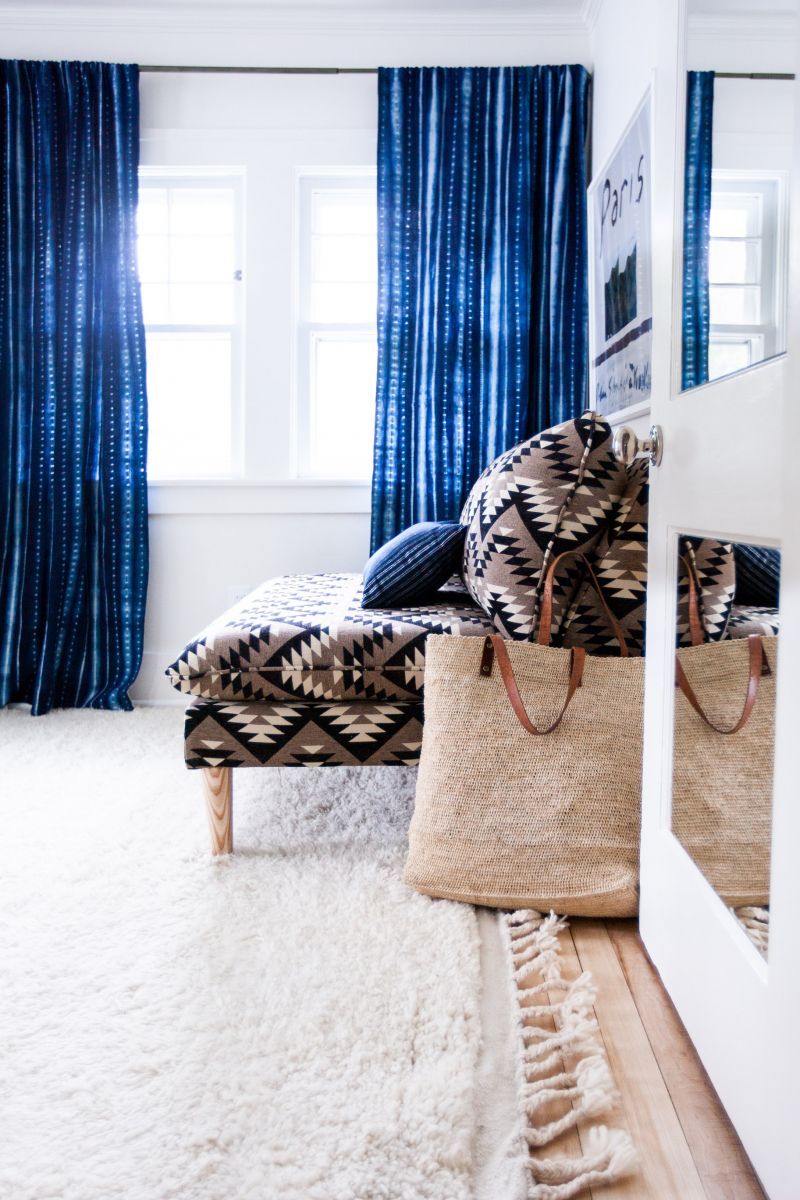
And the basement gym looks like a huge undertaking! Did you always know that this was a renovation you wanted to tackle, or did the need for it come over time?
This ideas definitely came to me over time. The gym was actually inspired by a hotel I stayed at in Paris! I was eating breakfast in their lower-level dining room, and noticed that the room next to it was a gorgeous gym. The gym had low ceilings and no windows/natural lighting, and it dawned on me that it was shaped a lot like my unfinished basement back home. A lightbulb went off in my head and I started to get excited about the idea of living with a luxury spa-like gym in my own home. When I got back to the U.S., I went to Home Depot and found all the materials and lighting to replicate the space. I couldn’t believe how easy it was—all my contractor needed was the lights, wood flooring that I used on the walls, subway tiles, and squishy gym flooring. I added my dream workout equipment, including a gorgeous walnut rowing machine that I had spotted in the MoMA catalog. Now I’m obsessed with it and honestly still laugh when I workout down there everyday. It’s so unexpected and cool to have a luxury gym in my little midwestern basement!
BASEMENT BEFORE


BASEMENT AFTER


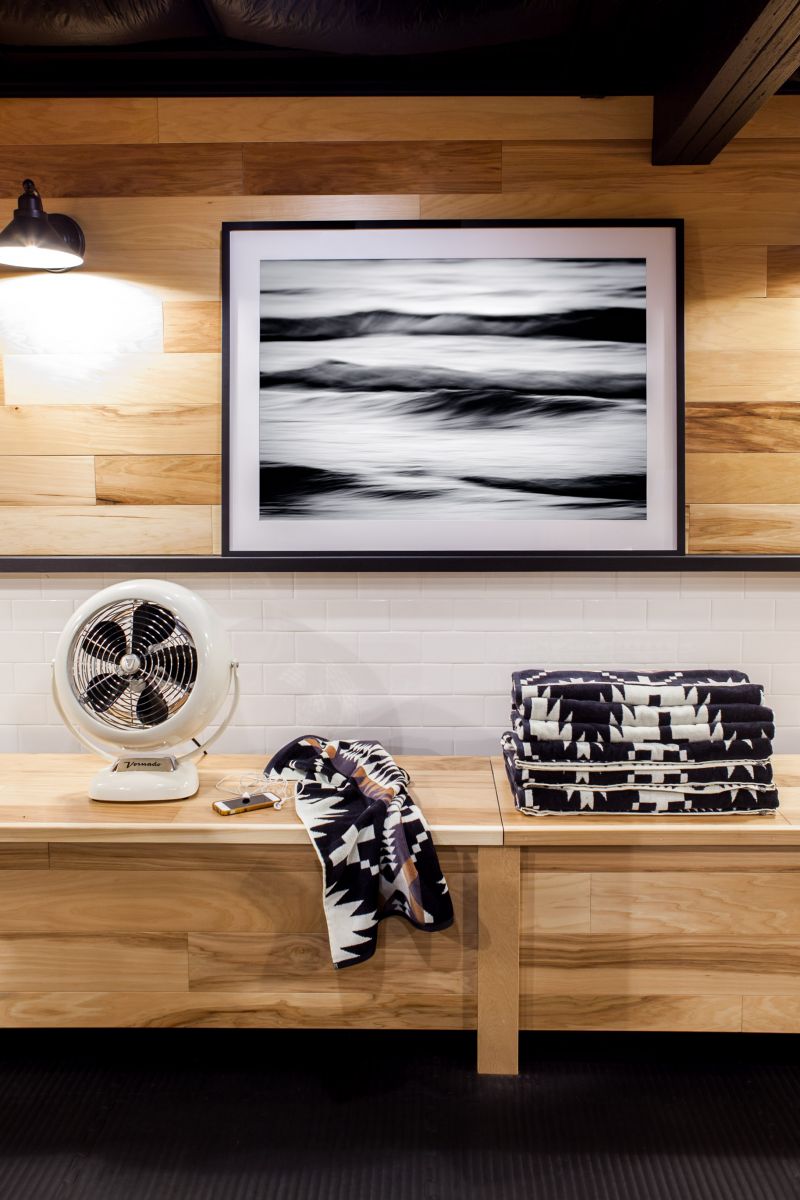
When going through these big additions, how did you prioritize your wants and needs to work within your budget? Do you encourage homeowners to start out with a “phase one” renovation and build out or change as it becomes more feasible, or save up to do it all at once?
That’s a tough call since admittedly I’m not great with numbers and finances. I chose to do it all at once before I moved in so that I didn’t have to live with a home that drove me crazy (and then I later added the gym when the idea came to mind). However, I had purchased my home intentionally under my budget with renovating in mind, which made that path a possibility. If you’re renovating in phases, I’d recommend starting with the rooms you spend the most time in, and/or the rooms that are unacceptable to you in their current state. When I bought my house, the kitchen and master bathroom would have been deal-breakers if I wasn’t able to renovate them, so that’s where I would have started if I had broken the renovation into phases. Decorative additions like proper moldings, baseboards, and a fancy-pants mantel can wait until the major eyesores are taken care of.
What advice would you give your 23-year-old self?
Keep giving it your best and don’t beat yourself up for your mistakes. They’re a vital part of learning and growing as a person.
Michelle Adams is The Everygirl…

Hidden talent or passion?
I dominated the three-legged sack race with my best friend in elementary school. I mean, DOMINATED! Oh, and I love to ski.
Favorite way to spend your time off?
Flea marketing or working out.
Go-to happy hour order?
Sauvignon blanc. Put a glass in my hand and I’m a happy camper.
Best advice you’ve ever received?
Give people a reason to hire you—other than your talent. The world is full of talented people, but it’s your character and integrity that set you apart.
If you could have lunch with any woman, who would it be and why?
OK, obviously I could get all deep here with this one and list a world leader, Maya Angelou, or a deceased relative, but I’m not going to! I’d love to have lunch with Jessica de Ruiter. She’s a stylist that I’m completely fascinated by. Her aesthetic has informed my home and my wardrobe, and I just think she looks like a damn cool person. And fine, it would be great to dine with Jackie Kennedy and my great great grandmothers as well ;)!
Product Sources
Living Room
Sofa, Serena & Lily
Armchairs, Lee Industries
Woven Side Chair, AP Shop
Black & White stripe pillows, Archive New York
Orange & White stripe pillows, Heather Taylor Home
Coffee table, Katy Skelton
Ceiling lamp, Moderne Icon
Rug, Crate & Barrel
Stripe throw blanket, D. Bryant Archie
Indigo Bench, Michelle Adams for Skyline Collection
Wave art, Artfully Walls
Chairs, Cappellini
Entryway
Hooks, The Line
Scarf, Upstate
Painting, Tom Borgese
Office
Built-in storage unit and filing cabinet, California Closets (and for Michigan residents like Michelle, call Janice at the Detroit showroom)
Dot art on top of filing cabinet, Artfully Walls
Wave art on top of filing cabinet, Artfully Walls
Desk, Calvin Klein
Wave art, Artfully Walls
Stool, Michelle Adams for Skyline Collection
Pedestal & Elephant sculpture, Flair
Dining Room
Painting, Karyn Lyons
Magnolia leaves, NDI
Eyeball painting, Creel & Gow
Napkins, Madeline Weinrib
Hurricane, March
Whiskey glasses, TRNK
Kitchen
Pendant light, John Derian
Topiaries, NDI
Towel, Little Korboose
Fig art, Artfully Walls
Pomegranate art, Artfully Walls
Pitcher, Farmhouse Pottery
Kitchen Nook
Cloud art, Tom Borgese
Chairs, Garza Marfa
Bowl, March
Bathroom
Shower Curtain: Quiet Town
Stool, Sawkille
Bath Oil, Jo Malone
Succulent, NDI
Art, Etsy
Master Bedroom
Bed, ABC
Duvet and sheet set, Dwell Studio
Throw, Madeline Weinrib
Lamp, DWR
Dresser, DWR
Wave photo, Artfully Walls
Flowers, NDI
Small lamp, Circa
Closet, California Closets
Guest Room
Photograph, Gigi Stoll
Sheet set, Matouk
Tie dye throw and pillows, S. Harris
Bed, Restoration Hardware
Chair, Serena & Lily
Leopard lamp, Circa Lighting
Flower arrangement, NDI
Brushstroke lamp, Jana Bek
Art (pictured with Michelle, clockwise from top left corner)
Grandeur by Caitlin McGauley
Carson by Megan Adams
Fig Plant by Kate Roebuck
August 2013 by Hilde Mork
Forever by Ashley Woodson Bailey
Boston Harbor by Megan Adams
Blue Painting 6 by Marie Freudenberger
Leopard x-benches, Calico Corners in Jamil Natural fabric
Second Guest Room/Meditation Room
Daybed, Shabby Chic
Indigo drapes, Tensira
Mobile, Etsy
Settee, Michelle Adams for Skyline Collection
Gym
Wood walls, Home Depot
Subway Tile, Home Depot
Sconce lights, Home Depot
Flooring, Home Depot
Rowing machine, WaterRower
Wave art, Artfully Walls
Johnny Cash photo, TRNK
Floor fan, Rejuvenation
Table fan, Rejuvenation
Towels, Pendleton
Attic
Chair, Michelle Adams for Skyline Collection
Framed textile, Simply Framed



 "
"